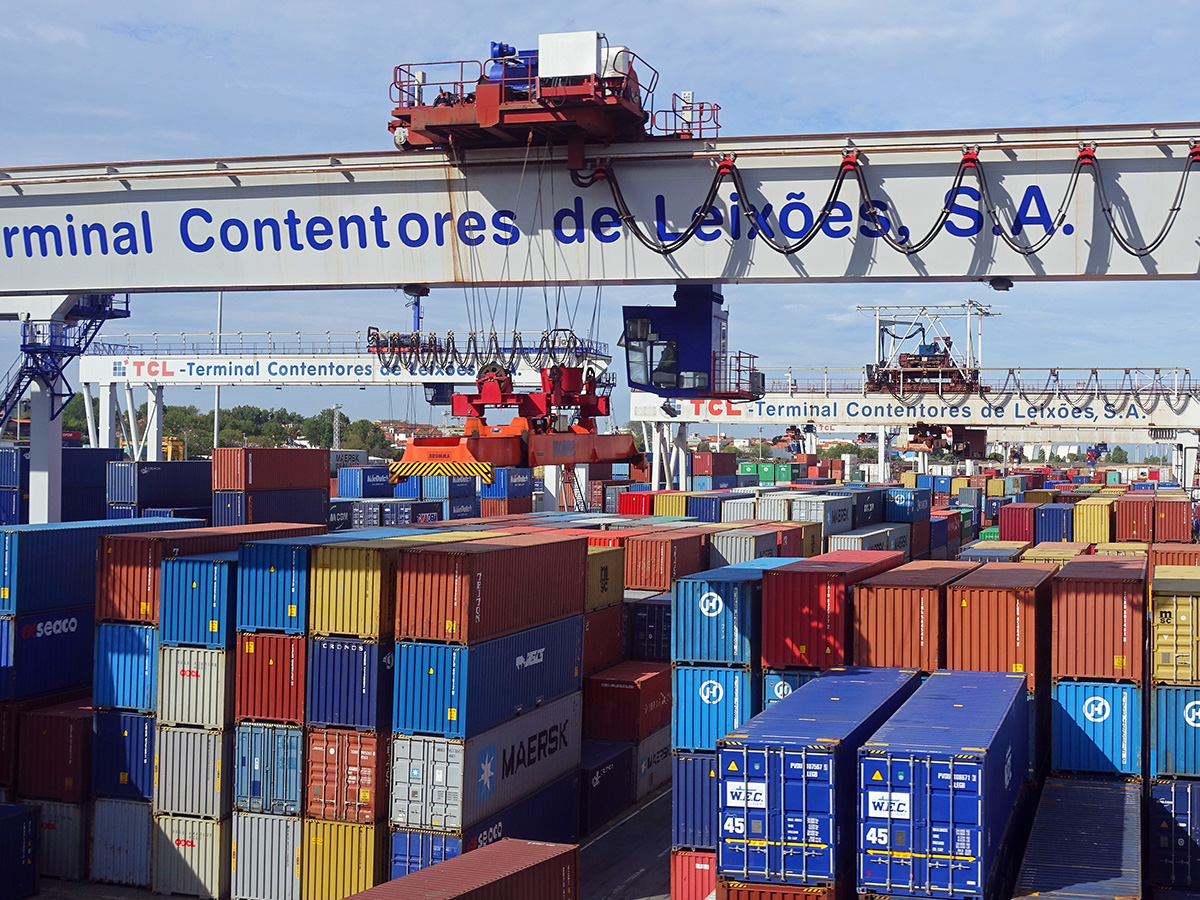 According to the Brexit trade agreement (the Trade and Cooperation Agreement (TCA)), trade between the EU and the UK will remain quota and tariff free. ‘Quota free’ means that trade will not be restricted in quantity by the authorities on either side. ‘Tariff free’ means that customs duties will not be collected by the UK authorities on imports from the EU nor by the EU authorities on imports from the UK.
According to the Brexit trade agreement (the Trade and Cooperation Agreement (TCA)), trade between the EU and the UK will remain quota and tariff free. ‘Quota free’ means that trade will not be restricted in quantity by the authorities on either side. ‘Tariff free’ means that customs duties will not be collected by the UK authorities on imports from the EU nor by the EU authorities on imports from the UK.
Article ‘GOODS .5: Prohibition of customs duties’ on page 20 of the agreement states that:
Except as otherwise provided for in this Agreement, customs duties on all goods originating in the other Party shall be prohibited.
This free-trade agreement was taken by many people to mean that trade would be unhindered, with no duties being payable. In fact, as many importers and exporters are finding, trade is not as ‘free’ as it was before January 2021. There are four sources of ‘friction’.
Tariffs on goods finished in the UK
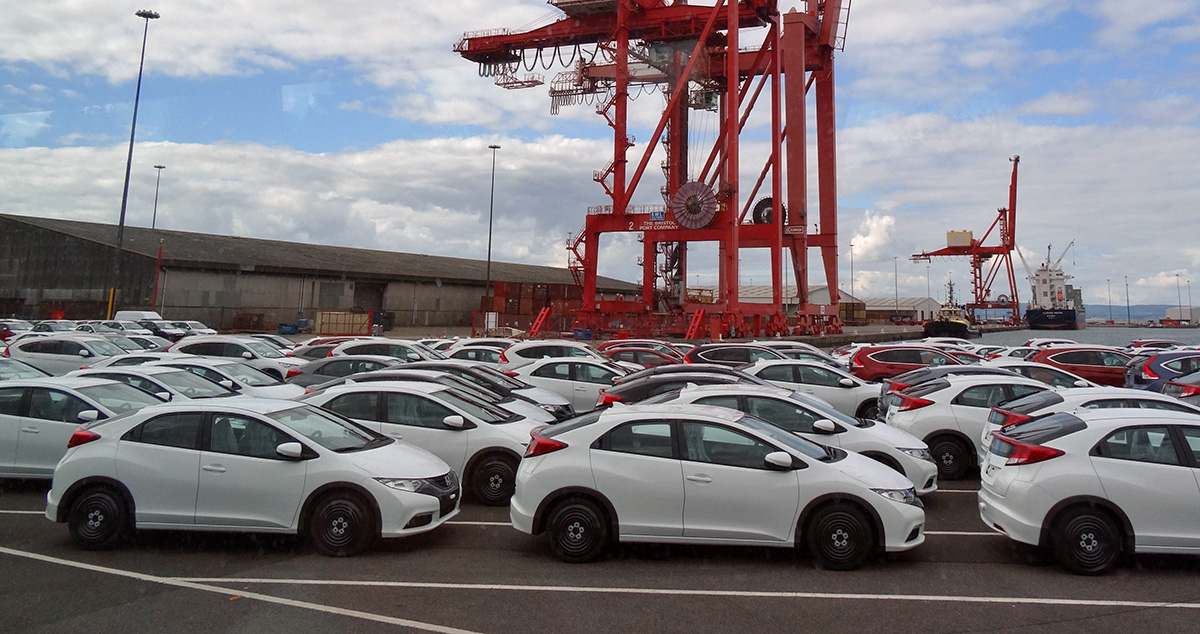 This has become a major area of concern for many UK companies. When a good is imported into the UK from outside the EU and then has value added to it by processing, packaging, cleaning, remixing, preserving, refashioning, etc., under ‘rules of origin’ regulations, it can only count as a UK good if sufficient value or weight is added. The proportions vary by product, but generally goods must have approximately 50% UK content (or 80% of the weight of foodstuffs) to qualify for tariff-free access to the EU. For example, for a petrol car, 55% of its value must have been created in either the EU or UK. Thus cars manufactured in the UK which use many parts imported from Japan, China or elsewhere, may not qualify for tariff-free access to the EU.
This has become a major area of concern for many UK companies. When a good is imported into the UK from outside the EU and then has value added to it by processing, packaging, cleaning, remixing, preserving, refashioning, etc., under ‘rules of origin’ regulations, it can only count as a UK good if sufficient value or weight is added. The proportions vary by product, but generally goods must have approximately 50% UK content (or 80% of the weight of foodstuffs) to qualify for tariff-free access to the EU. For example, for a petrol car, 55% of its value must have been created in either the EU or UK. Thus cars manufactured in the UK which use many parts imported from Japan, China or elsewhere, may not qualify for tariff-free access to the EU.
In other cases, it is simply the question of whether the processing is deemed ‘sufficient’, rather than the imported inputs having a specific weight or value. For example, the grinding of pepper is regarded as a sufficient process and thus ground pepper can be exported from the UK to the EU tariff free. Another example is that of coal briquettes:
The process to transform coal into briquettes (including applying intense pressure) goes beyond the processes listed in ‘insufficient processing’ and so the briquettes can be considered ‘UK originating’ regardless of the originating status of the coal used to produce the briquettes.
In the case of many garments produced in the UK and then sold in retail chains, many of which have branches in both the UK and EU, generally both the weaving and cutting of fabric to make garments, as well as the sewing, must take place in the UK/EU for the garments to be tariff free when exported from the UK to the EU and vice versa.
Precise details of rules of origin are given in the document, The Trade and Cooperation Agreement (TCA): detailed guidance on the rules of origin.
Many UK firms exporting to the EU and EU firms exporting to the UK are finding that their products are now subject to tariffs because of insufficient processing being done in the UK/EU. Indeed, with complex international supply chains, this is a major problem for many importing and exporting companies.
Documentation
Rules of origin require that firms provide documentation itemising what parts of their goods come from outside the UK/EU. Then it has to be determined whether tariffs will be necessary on the finished product. This is time consuming and is an example of the increase in ‘red tape’ about which many firms are complaining. As the Evening Standard article states:
Exporters have to be able to provide evidence to prove the origin of their products’ ingredients. Next year, they will also have to provide suppliers’ declarations too, and EU officials may demand those retrospectively, so exporters need to have them now.
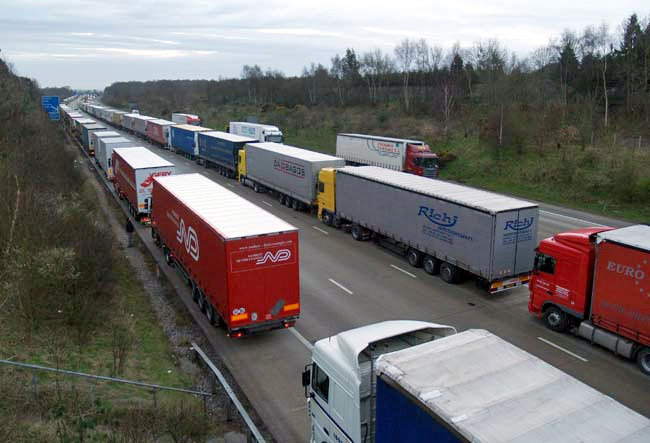 The increased paperwork and checks add to the costs of trade. Some EU companies are stating that they will no longer export to the UK and some UK companies that they will no longer export to the EU, or will have to set up manufacturing plants or distribution hubs in the EU to handle trade within the EU.
The increased paperwork and checks add to the costs of trade. Some EU companies are stating that they will no longer export to the UK and some UK companies that they will no longer export to the EU, or will have to set up manufacturing plants or distribution hubs in the EU to handle trade within the EU.
Other companies are adding charges to their products to cover the costs. As the Guardian article states:
“We bought a €47 [£42] shelf from Next for our bathroom,” said Thom Basely, who lives in Marseille. “On the morning it was supposed to be delivered we received an ‘import duty/tax’ demand for over €30, like a ransom note. It came as a complete surprise.”
In evidence given to the Treasury Select Committee (Q640) in May 2018, Sir Jon Thompson, then Chief Executive of HMRC, predicted that leaving the single market would involve approximately 200 million extra customs declarations on each side of the UK/EU border at a cost of £32.50 for each one, giving a total extra cost of approximately £6.5bn on each side of the border for companies trading with Europe. Although this was only an estimate, the extra ‘paperwork’ will represent a substantial cost.
VAT
Previously, goods could be imported into the UK without paying VAT in the UK on value added up to that point as VAT had already been collected in the EU. Similarly, goods exported to the EU would already have had VAT paid and hence would only be subject to the tax on additional value added. The UK was part of the EU VAT system and did not have to register for VAT in each EU country.
Now, VAT has to be paid on the goods as they are imported or released from a customs warehouse – similar to a customs duty. This is therefore likely to involve additional administration costs – the same as those with non-EU imports.
Services
The UK is a major exporter of services, including legal, financial, accounting, IT and engineering. It has a positive trade in services balance with the EU, unlike its negative trade in goods balance. Yet, the Brexit deal does not include free trade in services. Some of the barriers to other non-EU countries have been reduced for the UK in the TCA, but UK service providers will still face new barriers which will impose costs. For example, some EU countries will limit the time that businesspeople providing services can stay in their countries to six months in any twelve. Some will not recognise UK qualifications, unlike when the UK was a member of the single market.
 The financial services supplied by City of London firms are a major source of export revenue, with about 40% of these revenues coming from the EU. Now outside the single market, these firms have lost their ‘passporting rights’. These allowed such firms to sell their services into the EU without the need for additional regulatory clearance. The alternative now is for such firms to be granted ‘equivalence’ by the EU. This has not yet been negotiated and even if it were, does not cover the full range of financial services. It excludes, for example, banking services such as lending and deposit taking.
The financial services supplied by City of London firms are a major source of export revenue, with about 40% of these revenues coming from the EU. Now outside the single market, these firms have lost their ‘passporting rights’. These allowed such firms to sell their services into the EU without the need for additional regulatory clearance. The alternative now is for such firms to be granted ‘equivalence’ by the EU. This has not yet been negotiated and even if it were, does not cover the full range of financial services. It excludes, for example, banking services such as lending and deposit taking.
Conclusions
Leaving the single market has introduced a range of frictions in trade. These are causing severe problems to some importers and exporters in the short term. Some EU goods are now unavailable in the UK or only so at significantly higher prices. Some exporters are finding that the frictions are too great to make their exports profitable. However, it remains to be seen how quickly accounting and logistical systems can adjust to improve trade flows between the UK and the EU.
But some of these frictions, as itemised above, will remain. According to the law of comparative advantage, these restrictions on trade will lead to a loss of GDP. And these losses will not be spread evenly throughout the UK economy: firms and their employees which rely heavily on UK–EU trade will be particularly hard hit.
Articles
- EU firms refuse UK deliveries over Brexit tax changes
BBC News, Robert Plummer (5/1/21)
- Brexit trade problems: what’s gone wrong and can it be fixed?
The Conversation, Billy Melo Araujo (14/1/21)
- Brexit: parcels of grief
Turbulent Times, Richard North (8/1/21)
- UK retailers stumped by post-Brexit trade deal with EU
Financial Times, Jonathan Eley and Daniel Thomas (7/1/21)
- Pan-EU food supply chains hit by Brexit trade deal
Financial Times, Peter Foster, Arthur Beesley and Sam Fleming (6/1/21)
- Customers in Europe hit by post-Brexit charges when buying from UK
The Guardian, Jon Henley (7/1/21)
- UK importers brace for ‘disaster’ as new Brexit customs checks loom
The Guardian, Joanna Partridge (7/2/21)
- Brexit: The reality dawns
BBC News, Scotland, Douglas Fraser (8/1/21)
- Post-Brexit customs systems not fit for purpose, say meat exporters
BBC News, Simon Jack (15/1/21)
- Brexit: How much disruption has there been so far?
BBC News, Reality Check team (1/2/21)
- Baffling Brexit rules threaten export chaos, Gove is warned
The Observer, Toby Helm (10/1/21)
- Shock Brexit charges are hurting us, say small British businesses
The Observer, Toby Helm and Michael Savage (17/1/21)
- ‘A Brexit nightmare’: the British businesses being pushed to breaking point
The Observer, Toby Helm (24/1/21)
- Debenhams closes online business in Ireland as 50 major UK retailers face EU tariffs
ITV News, Joel Hills (7/1/21)
- The Brexit deal is being celebrated as though it removes all tariffs. It doesn’t
Prospect, Sam Lowe (8/1/21)
- As Marks and Spencer warns of Brexit nightmare, what are these Rules of Origin red tape issues?
Evening Standard, Jim Armitage (9/1/21)
- UK VAT after the transitional period
The Institute of Chartered Accountants in England and Wales (31/12/20)
- The Brexit deal and the services sector
UK in a Changing Europe, Sarah Hall (28/12/20)
- What does the Brexit trade deal mean for financial services?
UK in a Changing Europe, Sarah Hall (27/12/20)
Official documents
Questions
- Explain what is meant by ‘rules of origin’.
- If something is imported to the UK from outside the UK and then is refashioned in the UK and exported to the EU but, according to the rules of origin has insufficient value added in the UK, does this mean that such as good will be subject to tariffs twice? Explain.
- Are tariffs exactly the same as customs duties? Is the distinction made in the Guardian article a correct one?
- Is it in the nature of a free-trade deal that it is not the same as a single-market arrangement?
- Find out what arrangement Switzerland has with the EU. How does it differ from the UK/EU trade deal?
- What are the advantages and disadvantages of the Swiss/EU agreement over the UK/EU one?
- Are the frictions in UK–EU trade likely to diminish over time? Explain.
- Find out what barriers to trade in services now exist between the UK and EU. How damaging are they to UK services exports?
 At 23:00 on 31 December 2020, the UK withdrew from the European single market. This ended the transition period which followed the UK’s departure from the EU on 31 January 2020. But, with the Trade and Cooperation Agreement (‘the deal’) signed on 30 December, it was agreed that there would be no tariffs or quotas on trade in goods between the UK and the EU.
At 23:00 on 31 December 2020, the UK withdrew from the European single market. This ended the transition period which followed the UK’s departure from the EU on 31 January 2020. But, with the Trade and Cooperation Agreement (‘the deal’) signed on 30 December, it was agreed that there would be no tariffs or quotas on trade in goods between the UK and the EU.
So what are the new economic relations between the EU and the UK and how will they impact on the UK economy? What new restrictions are there on trade in goods and on the movement of labour and capital? How is trade in services, including financial services, affected? What new agreements, such as on fishing, will replace previous agreements?
What will happen to trade between Northern Ireland and the Republic of Ireland? What will happen to trade between Great Britain and Northern Ireland?
 What will happen to regulations over standards of traded products and their production? Will the UK government be able to provide subsidies or other types of support for goods or services exported to the EU? How will disputes about standards and support to companies be resolved?
What will happen to regulations over standards of traded products and their production? Will the UK government be able to provide subsidies or other types of support for goods or services exported to the EU? How will disputes about standards and support to companies be resolved?
How will trade with non-EU countries change? If the EU has trade agreements with such countries, do these agreements now apply to trade between the UK and such countries? How free is the UK now to negotiate new trade agreements with non-EU countries? How will the UK’s negotiating strength be affected by its withdrawal from the EU?
Rather than listing the changes here, follow the links below to the articles and assess the nature of the changes and then attempt the questions. The articles represent a balance of views.
What is clear is that these are all big issues and are likely to have a significant impact on the UK economy. Most economists argue that the net effect will be negative on trade and economic growth, but there is huge uncertainty about the magnitude of the effects. Much will depend on how arrangements between the UK and the EU develop over the coming months and years.
Articles
 Brexit deal explained: What will be the impact of UK’s agreement with EU?
Brexit deal explained: What will be the impact of UK’s agreement with EU?Sky News, Ed Conway (24/12/20)
- Brexit deal: What is in it?
BBC News, Chris Morris (28/12/20)
- Brexit: What are the key points of the deal?
BBC News, Tom Edgington (30/12/20)
- Brexit trade deal explained: the key parts of the landmark agreement
Financial Times (25/12/20)
- The key details of the Brexit deal summarised, from trade to fishing
The Telegraph, James Crisp and Gordon Rayner (3/1/21)
- Committees, visas and climate change: Brexit experts’ verdicts on the deal details
The Guardian, Lisa O’Carroll (28/12/20)
- The left must stop mourning Brexit – and start seeing its huge potential
The Guardian, Larry Elliott (31/12/20)
- The Guardian view on Britain out of the EU: a treasure island for rentiers
The Guardian, Editorial (27/12/20)
- Brexit Is Finally Done, but It Already Seems Out of Date
New York Times, Mark Landler (30/12/20)
- Towards a modern UK-EU trade relationship
Best for Britain, David Henig (28/12/20)
- Brexit Is a New World Businesses Still Need to Figure Out
Bloomberg, Deirdre Hipwell, Craig Trudell, and Dara Doyle (1/1/21)
UK and EU documents
Questions
- Summarise the main features of the Trade and Cooperation Agreement and how the UK’s new relationship with the EU differs from being a member.
- What are the potential economic benefits from being outside the EU?
- What are the economic drawbacks for the UK from having left the EU, albeit with the new Trade and Cooperation Agreement?
- On balance, do you think that the UK will gain or lose economically from having left the EU? Explain your answer.
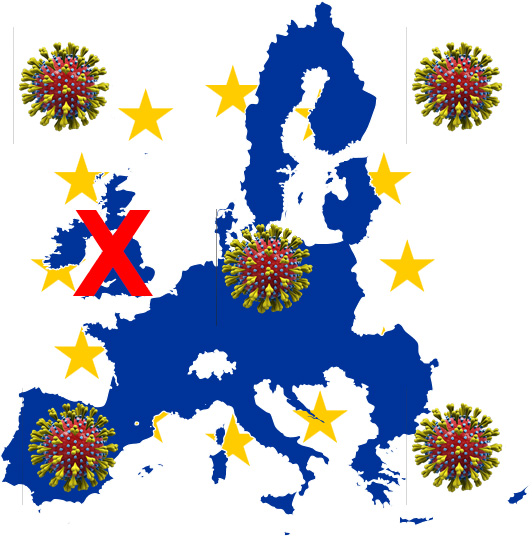 The LSE’s Centre for Economic Performance has just published a paper looking at the joint impact of Covid-19 and Brexit on the UK economy. Apart from the short-term shocks, both will have a long-term dampening effect on the UK economy. But they will largely affect different sectors.
The LSE’s Centre for Economic Performance has just published a paper looking at the joint impact of Covid-19 and Brexit on the UK economy. Apart from the short-term shocks, both will have a long-term dampening effect on the UK economy. But they will largely affect different sectors.
Covid-19 has affected, and will continue to affect, direct consumer-facing industries, such as shops, the hospitality and leisure industries, public transport and personal services. Brexit will tend to hit those industries most directly involved in trade with Europe, the UK’s biggest trading partner. These industries include manufacturing, financial services, posts and telecommunications, mining and quarrying, and agriculture and fishing.
Despite the fact that largely different sectors will be hit by these two events, the total effect may be greater than from each individually. One of the main reasons for this is the dampening impact of Covid-19 on globalisation. 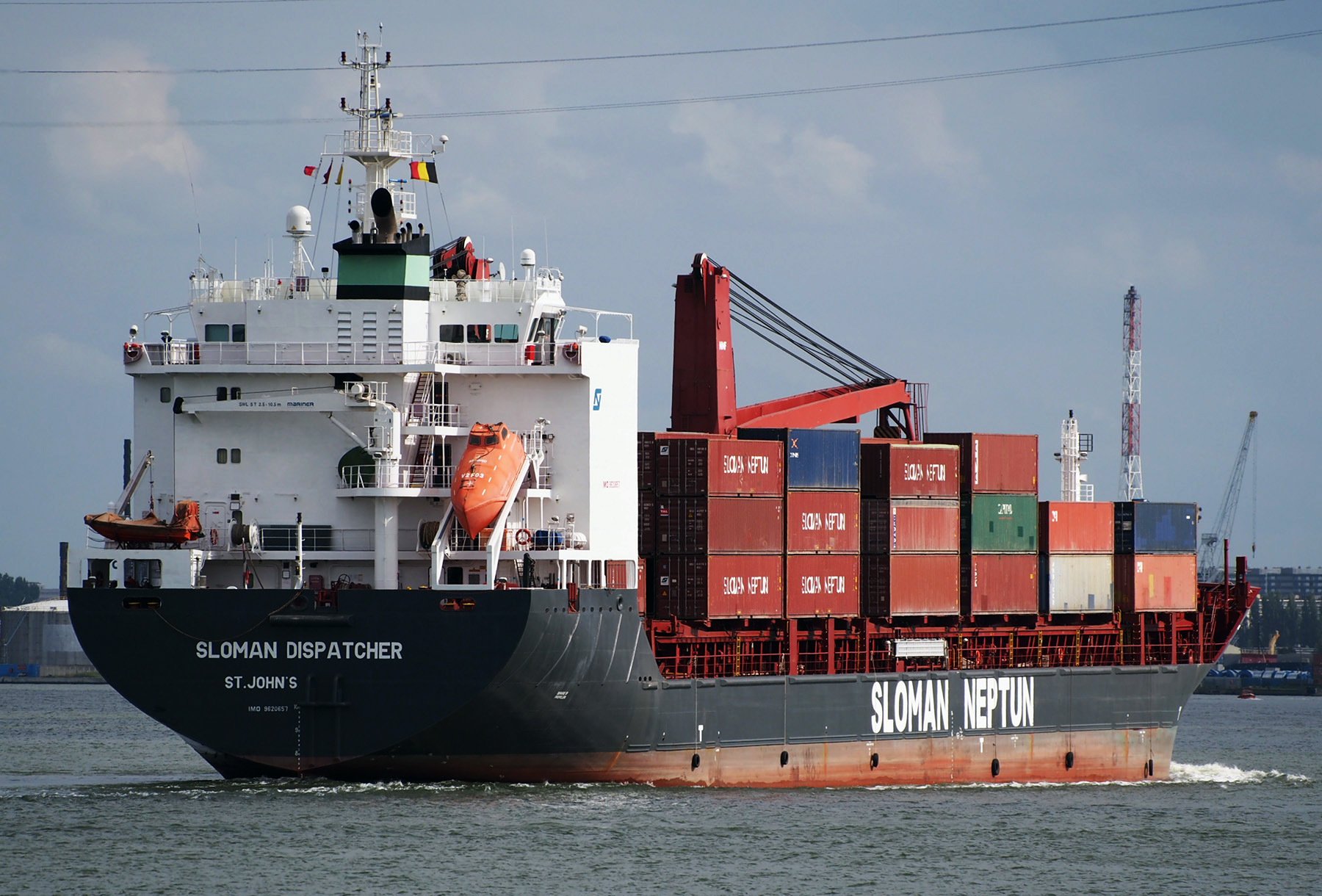 Travel restrictions are likely to remain tighter to more distant countries. And countries are likely to focus on trading within continents or regions rather than the whole world. For the UK, this, other things being equal, would mean an expansion of trade with the EU relative to the rest of the world. But, unless there is a comprehensive free-trade deal with the EU, the UK would not be set to take full advantage of this trend.
Travel restrictions are likely to remain tighter to more distant countries. And countries are likely to focus on trading within continents or regions rather than the whole world. For the UK, this, other things being equal, would mean an expansion of trade with the EU relative to the rest of the world. But, unless there is a comprehensive free-trade deal with the EU, the UK would not be set to take full advantage of this trend.
Another problem is that the effects of the Covid-19 pandemic have weakened the economy’s ability to cope with further shocks, such as those from Brexit. Depending on the nature (or absence) of a trade deal, Brexit will impose higher burdens on trading companies, including meeting divergent standards and higher administrative costs from greater form filling, inspections and customs delays.
Papers
Articles
Questions
- Referring to the LSE paper, give some examples of industries that are likely to be particularly hard hit by Brexit when the transition period ends? Explain why.
- Why have university finances been particularly badly affected by both Covid-19 and Brexit? Are there any other sectors that have suffered (or will suffer) badly from both events?
- Is there a scenario where globalisation in trade could start to grow again?
- Has Covid-19 affected countries’ comparative advantage in particular products traded with particular countries and, if so, how?
- The authors of the LSE report argue that ‘government policies to stimulate demand, support workers to remain in employment or find new employment, and to support businesses remain essential’. How realistic is it to expect the government to provide additional support to businesses and workers to deal with the shock of Brexit?
 Three international agencies, the IMF, the European Commission and the OECD, all publish six-monthly forecasts for a range of countries. As each agency’s forecasts have been published this year, so the forecasts for economic growth and other macroeconomic indicators, such as unemployment, have got more dire.
Three international agencies, the IMF, the European Commission and the OECD, all publish six-monthly forecasts for a range of countries. As each agency’s forecasts have been published this year, so the forecasts for economic growth and other macroeconomic indicators, such as unemployment, have got more dire.
The IMF was the first to report. Its World Economic Outlook, published on 14 April, forecast that in the UK real GDP would fall by 6.5% in 2020 and rise by 4% in 2021 (not enough to restore GDP to 2019 levels); in the USA it would fall by 5.9% this year and rise by 4.7% next year; in the eurozone it would fall by 7.5% this year and rise by 4.7% next.
The European Commission was next to report. Its AMECO database was published on 6 May. This forecast that UK real GDP would fall by 8.3% this year and rise by 6% next; in the USA it would fall by 6.5% this year and rise by 4.9% next; in the eurozone it would fall by 7.7% this year and rise by 6.3% next.
The latest to report was the OECD on 10 June. The OECD Economic Outlook was the most gloomy. In fact, it produced two sets of forecasts.
The first, more optimistic one (but still more gloomy than the forecasts of the other two agencies) was based on the assumption that lockdowns would continue to be lifted and that there would be no second outbreak later in the year. This ‘single-hit scenario’ forecast that UK real GDP would fall by 11.5% this year and rise by 9% next (a similar picture to France and Italy); in the USA it would fall by 7.3% this year and rise by 4.1% next; in the eurozone it would fall by 9.1% this year and rise by 6.5% next.
The second set of OECD forecasts was based on the assumption that there would be a second wave of the virus and that lockdowns would have to be reinstated. Under this ‘double-hit scenario’, the UK’s GDP is forecast to fall by 14.0% this year and rise by 5.0 per cent next; in the USA it would fall by 8.5% this year and rise by 1.9% next; in the eurozone it would fall by 11.5% this year and rise by 3.5% next.
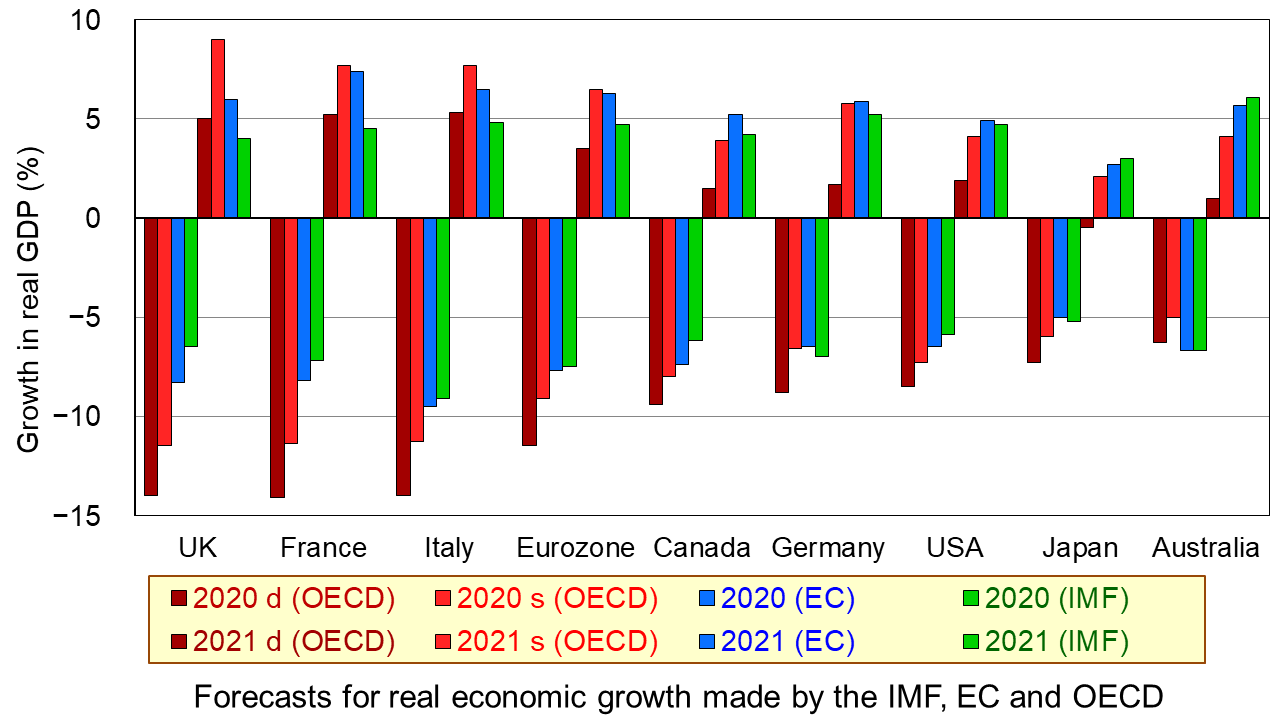
The first chart shows the four sets of forecasts (including two from the OECD) for a range of countries. The first four bars for each country are the forecasts for 2020; the other four bars for each country are for 2021. (Click here for a PowerPoint of the chart.)
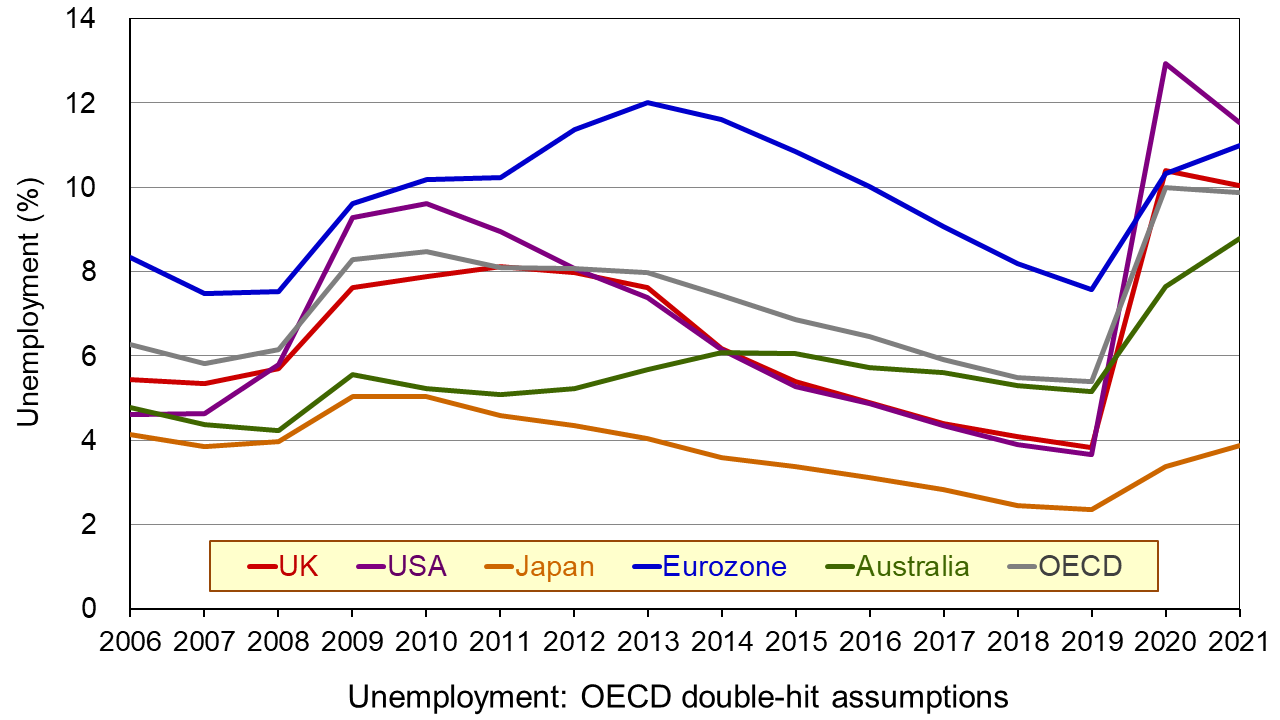
The second chart shows unemployment rates from 2006. The figures for 2020 and 2021 are OECD forecasts based on the double-hit assumption. You can clearly see the dramatic rise in unemployment in all the countries in 2020. In some cases it is forecast that there will be a further rise in 2021. (Click here for a PowerPoint of the chart.)
As the OECD states:
In both scenarios, the recovery, after an initial, rapid resumption of activity, will take a long time to bring output back to pre-pandemic levels, and the crisis will leave long-lasting scars – a fall in living standards, high unemployment and weak investment. Job losses in the most affected sectors, such as tourism, hospitality and entertainment, will particularly hit low-skilled, young, and informal workers.
But why have the forecasts got gloomier? There are both demand- and supply-side reasons.
Aggregate demand has fallen more dramatically than originally anticipated. Lockdowns have lasted longer in many countries than governments had initially thought, with partial lockdowns, which replace them, taking a long time to lift. With less opportunity for people to go out and spend, consumption has fallen and saving has risen. Businesses that have shut, some permanently, have laid off workers or they have been furloughed on reduced incomes. This too has reduced spending. Even when travel restrictions are lifted, many people are reluctant to take holidays at home and abroad and to use public transport for fear of catching the virus. This reluctance has been higher than originally anticipated. Again, spending is lower than before. Even when restaurants, bars and other public venues are reopened, most operate at less than full capacity to allow for social distancing. Uncertainty about the future has discouraged firms from investing, adding to the fall in demand.
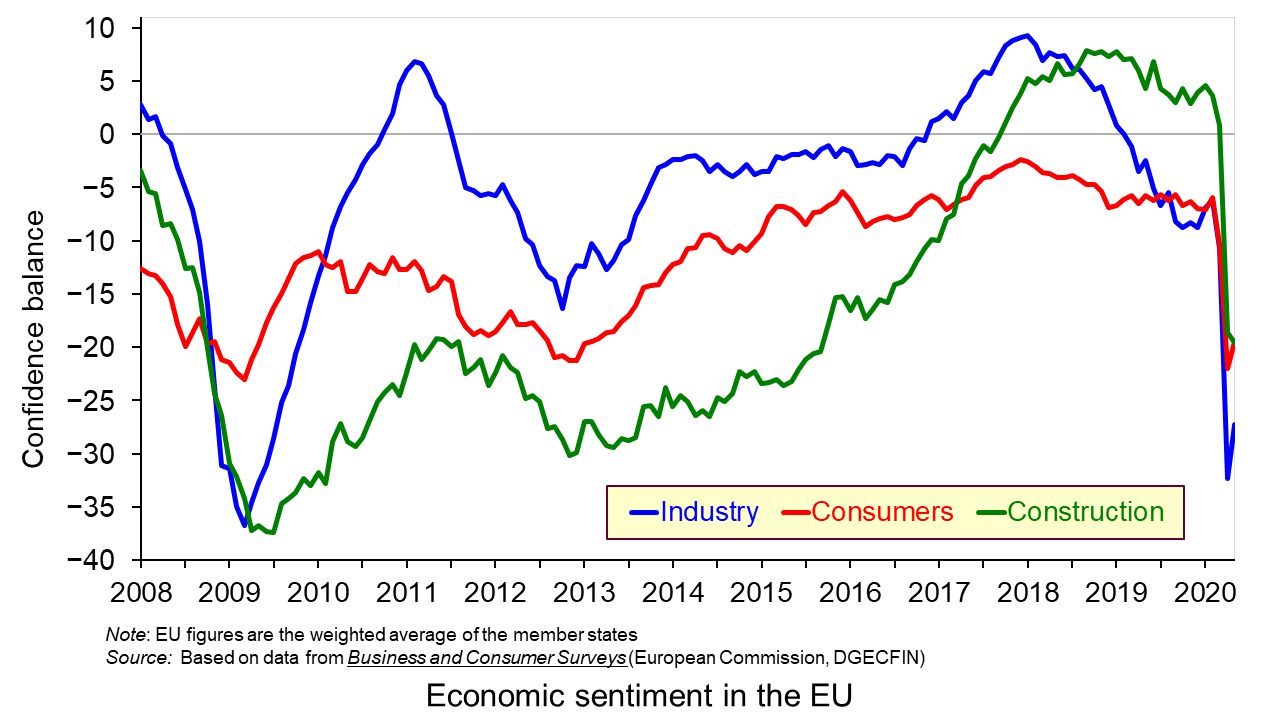
On the supply side, there has been considerable damage to capacity, with firms closing and both new and replacement investment being put on hold. Confidence in many sectors has plummeted as shown in the third chart which looks at business and consumer confidence in the EU. (Click here for a PowerPoint of the above chart.) Lack of confidence directly affects investment with both supply- and demand-side consequences.
Achieving a sustained recovery will require deft political and economic judgements by policymakers. What is more, people are increasingly calling for a different type of economy – one where growth is sustainable with less pollution and degradation of the environment and one where growth is more inclusive, where the benefits are shared more equally. As Angel Gurría, OECD Secretary-General, states in his speech launching the latest OECD Economic Outlook:
The aim should not be to go back to normal – normal was what got us where we are now.
Articles
OECD publications
Questions
- Why has the UK economy been particularly badly it by the Covid-19 pandemic?
- What will determine the size and timing of the ‘bounce back’?
- Why will the pandemic have “dire and long-lasting consequences for people, firms and governments”?
- Why have many people on low incomes faced harsher consequences than those on higher incomes?
- What are the likely environmental impacts of the pandemic and government measures to mitigate the effects?
 Pre-Covid 19, the climate change movement had gathered momentum with climate activist Greta Thunberg regularly in the news and people around the world striking in protest of inadequate government action on the climate crisis. However, now in a world overtaken by the pandemic, climate change is no longer at the centre and appears a more distant threat. The majority of the large climate change events due to take place this year have been delayed and policy announcements are aimed at supporting the current economic hardships. This is not surprising nor debatable, but there is a risk that, as Covid-19 dominates the news, policy and debates for a long time to come, this will overshadow any environmental initiatives that were due to be implemented.
Pre-Covid 19, the climate change movement had gathered momentum with climate activist Greta Thunberg regularly in the news and people around the world striking in protest of inadequate government action on the climate crisis. However, now in a world overtaken by the pandemic, climate change is no longer at the centre and appears a more distant threat. The majority of the large climate change events due to take place this year have been delayed and policy announcements are aimed at supporting the current economic hardships. This is not surprising nor debatable, but there is a risk that, as Covid-19 dominates the news, policy and debates for a long time to come, this will overshadow any environmental initiatives that were due to be implemented.
Governments around the globe are navigating their economies through the pandemic and starting to think about the future road to recovery. However, there is an argument that it doesn’t have to be a case of ‘either or’, as there is the potential for policies to address the Covid-19 crisis and climate change at the same time. How policy makers respond now could shape the fight against climate change for the future. One of the lessons from the pandemic is that quick responses to high impact risks are vital to reduce costs. With that in mind, and given the costs of climate change, it is arguable that now is the best time to address its challenges.
Climate change and Covid
 It is estimated that there was a total global loss of $3tn caused by natural disasters over the past decade. By 2050, cumulative damages from climate change are predicted to reach $8 trillion, impoverishing the world as a whole by 3% of GDP and the poorest regions by more. Climate activists argue that despite the economic consequences of climate change, the action taken by governments has been insufficient. In 2015, the then Bank of England governor, Mark Carney warned: ‘Once climate change becomes a defining issue for financial stability, it may already be too late.’
It is estimated that there was a total global loss of $3tn caused by natural disasters over the past decade. By 2050, cumulative damages from climate change are predicted to reach $8 trillion, impoverishing the world as a whole by 3% of GDP and the poorest regions by more. Climate activists argue that despite the economic consequences of climate change, the action taken by governments has been insufficient. In 2015, the then Bank of England governor, Mark Carney warned: ‘Once climate change becomes a defining issue for financial stability, it may already be too late.’
However, since the pandemic struck all over the world, there have been positive consequences for the environment. Pollution levels started dropping fast as airlines grounded fleets, car travel came to a stop and industries shut down. With 2.6bn people living under restrictions under their country’s lockdown, there has also been an impact on the environment, not just the spread of the virus. Given that the lockdowns across the world have come at huge social and human costs, is now not the time to ensure that these improvements for the environment are not just temporary but ignite long-term changes?
 Given the clear impacts and risks of Covid on peoples’ health, our ability to change our behaviour quickly has been striking. The importance of behaviour change has been brought to the centre and, arguably, it shows that we are capable of change when lives are at risk and are deemed more important than business-as-usual GDP growth. The application to climate change, however, is not as straightforward, as the costs to human lives are often viewed as a future problem.
Given the clear impacts and risks of Covid on peoples’ health, our ability to change our behaviour quickly has been striking. The importance of behaviour change has been brought to the centre and, arguably, it shows that we are capable of change when lives are at risk and are deemed more important than business-as-usual GDP growth. The application to climate change, however, is not as straightforward, as the costs to human lives are often viewed as a future problem.
Global cooperation
Dr Laure de Preux, Assistant Professor of Economics at Imperial College Business School, highlights the important role that cooperation across borders plays in the face of a global crisis like Coronavirus, and how that can be applied to the fight against climate change.
The big challenges the world is facing, including the climate change crisis, can only be dealt with efficiently through international cooperation. We cannot only act individually; the benefits of our actions are multiplied if integrated into a global strategy. In the case of COVID-19, social distancing measures can only be truly effective if they are adopted at a large scale.
World leaders are aware that their economies now face one of the most severe recessions in history as a consequence of the coronavirus restrictions. Governments are going to have to dedicate huge budgets to enable the economic activity to resume again. This presents a unique challenge, but also a massive opportunity for global cooperation. The question to be asked, therefore, is that if these stimulus packages are a one-off chance to transform the economy, how should the government spend it and what should be their focus? Should the recovery policies focus on creating a greener economy?
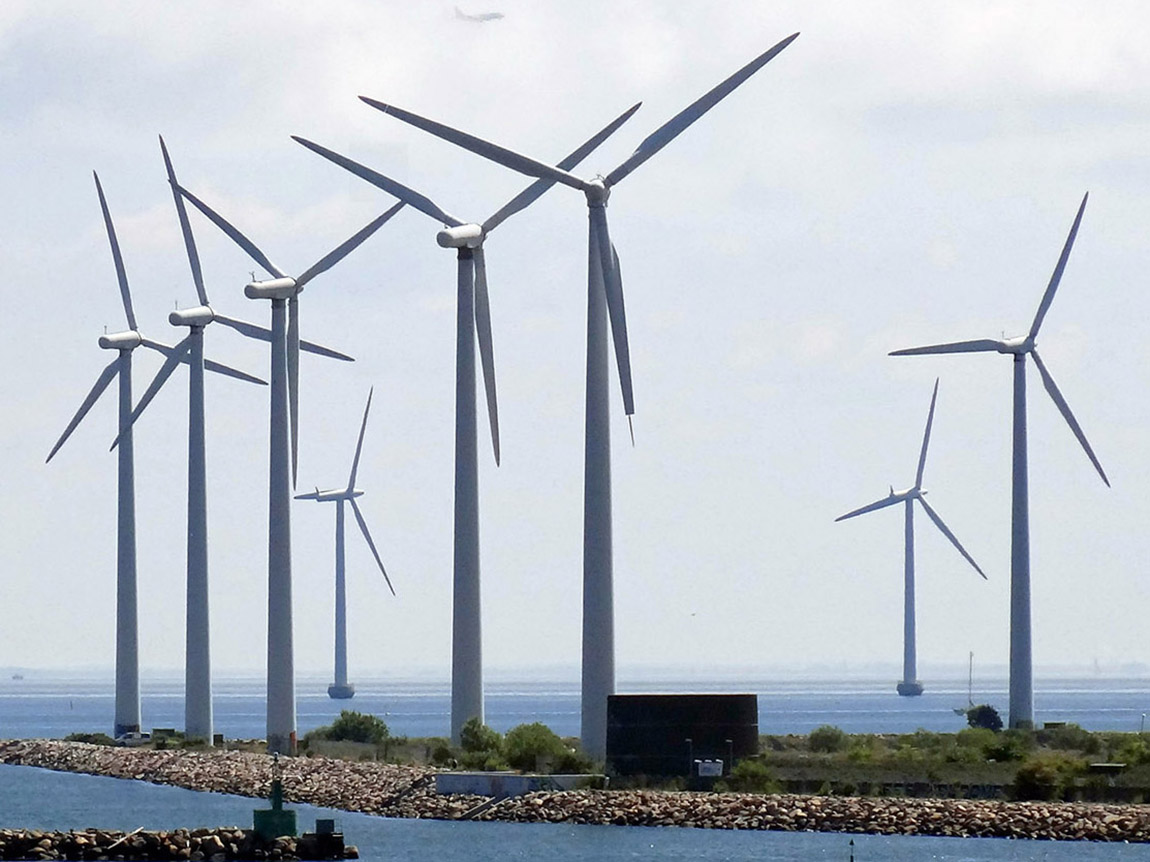 The European Union unveiled what it is calling the biggest ‘green’ stimulus package in history. Ursula von der Leyen, the European Commission president, told European Parliament members that this issue is about all nations and it is bigger than any one of them. The deputy Prime Minister of Spain, Teresa Ribera, states that there is a greater risk by not acting in this way. She argues that if the recovery is not green, then it will be nothing but a short-cut to solve the current problems rather than a true economic recovery.
The European Union unveiled what it is calling the biggest ‘green’ stimulus package in history. Ursula von der Leyen, the European Commission president, told European Parliament members that this issue is about all nations and it is bigger than any one of them. The deputy Prime Minister of Spain, Teresa Ribera, states that there is a greater risk by not acting in this way. She argues that if the recovery is not green, then it will be nothing but a short-cut to solve the current problems rather than a true economic recovery.
It is not just in Europe where the recovery has an environment focus. Joe Biden is believed to be planning a similarly huge green stimulus package for the US. The model echoes the vast investment projects of the New Deal that helped lift America out of the Great Depression in the 1930s.
There are sound economic reasons why politicians see green technology as a prudent investment. Renewable energy is now often cheaper than fossil fuels in large parts of the world and the technologies are proven and can be built at scale today. The argument for renewables providing a pathway for clean future growth is based on the logic of much of manufacturing – the more you produce, the cheaper it gets. However, China does not appear to have similar plans for their recovery. China produces almost a third of the world’s emissions, as much as the USA and the EU combined. At the annual National People’s Congress, there was no indication that the big expansion of coal-fired electricity generation would be reversed, even though it is also expanding the production of renewable energy. China expanded its coal-fired power stations as a key part of its stimulus package after the 2008 financial crisis.
Policy decisions
 The UK government receives ongoing pressure from energy companies. The boss of energy giant SSE, Alistair Phillips-Davies has warned that a failure to deal with climate change could eventually have a greater economic impact than coronavirus. SSE wants the UK government to encourage private investment in renewables by giving the green light to big new projects, such as hydrogen and carbon capture plants and boosting electric vehicles. Despite the impacts of climate change not being immediately felt in comparison to Covid-19, Phillips-Davies argues that a failure to deal with climate change could lead to great long-term impacts:
The UK government receives ongoing pressure from energy companies. The boss of energy giant SSE, Alistair Phillips-Davies has warned that a failure to deal with climate change could eventually have a greater economic impact than coronavirus. SSE wants the UK government to encourage private investment in renewables by giving the green light to big new projects, such as hydrogen and carbon capture plants and boosting electric vehicles. Despite the impacts of climate change not being immediately felt in comparison to Covid-19, Phillips-Davies argues that a failure to deal with climate change could lead to great long-term impacts:
While it is still too early to predict with confidence the full human, social and economic impact of coronavirus, we can say with certainty that significant investment will be needed to rebuild the UK economy in its wake.
It is clear that any pandemic-induced financial decisions made over the next 12 months will shape the global economy for the next decade. The full impact of the virus on climate change will be determined by the world’s stimulus measures adopted post-pandemic. Following the 2008 financial crisis, the energy-intensive stimulus measures that followed, particularly in China, boosted emissions. Therefore, if we are to meet the reduction in emissions target our response needs to be green, helping to shape a sustainable future. Dr Alex Koberle, of the Grantham Institute at Imperial College London, argues that Governments should take time to reflect, learn from past mistakes and redirect development towards a sustainable future.
Shouldn’t growth be given priority?
With 1.6 billion people working in the informal economy worldwide reckoned to be in immediate danger of losing their livelihoods (according to the International Labour Organization), is now the right time to be focusing on the climate? Industries such as airlines and car manufacturing are strategic industries, employing millions of people. Headlines of longer-term environmental targets will be given less importance than headlines of job losses. Recovery relies on the government finding ways to employ lots and lots of people. There is a close relationship between real GDP, employment and energy consumption. Therefore, any policies aimed at reducing greenhouse gas emissions, unless carefully directed, could reduce economic growth and employment for both less and more developed economies. Such policies would increase the cost of conventional energy sharply.
Critics of a green energy policy for recovery argue that investing in renewable energy ignores the adverse effects of reduced investment and higher energy costs in other sectors. By governments prioritising policy to focus on the environment, they could harm the ability of most people to improve their own circumstances, especially given the terrible economic shock caused by the lockdowns.
Conclusion
 With the majority of news in recent months providing little joy, there has been at least the positive impact on the environment. However, advocates say it not a cause for celebration and warn that any benefits are likely to be short lived. There have been some positive behavioural impacts but the true test will be what happens in the recovery phase. If the focus is returned to business as usual what happens to the targets actioned prior to Covid-19?
With the majority of news in recent months providing little joy, there has been at least the positive impact on the environment. However, advocates say it not a cause for celebration and warn that any benefits are likely to be short lived. There have been some positive behavioural impacts but the true test will be what happens in the recovery phase. If the focus is returned to business as usual what happens to the targets actioned prior to Covid-19?
The immediate priority of all governments right now is to control the pandemic and to save lives. As their policy interventions have an impact and economies start to emerge from this crisis, then there is an important debate to be had about how new investments can help create a cleaner, greener recovery. We have learnt from the current pandemic that changes can be made when consequences are imminent, however, climate change is a threat that doesn’t go away, and is arguably just as urgent. Solutions to both crises can be integrated into a coherent response to propel the global economy towards sustainable growth and increased resilience.
Articles
Letter
Questions
- Are government attempts to reduce the impact of climate change beneficial or harmful to UK firms?
- What policy instruments can the government use to increase economic activity?
- How does an increase in investment affect aggregate demand?
- What are the costs and benefits of economic growth?
- Why can climate change be described as a market failure?
 According to the Brexit trade agreement (the Trade and Cooperation Agreement (TCA)), trade between the EU and the UK will remain quota and tariff free. ‘Quota free’ means that trade will not be restricted in quantity by the authorities on either side. ‘Tariff free’ means that customs duties will not be collected by the UK authorities on imports from the EU nor by the EU authorities on imports from the UK.
According to the Brexit trade agreement (the Trade and Cooperation Agreement (TCA)), trade between the EU and the UK will remain quota and tariff free. ‘Quota free’ means that trade will not be restricted in quantity by the authorities on either side. ‘Tariff free’ means that customs duties will not be collected by the UK authorities on imports from the EU nor by the EU authorities on imports from the UK.  This has become a major area of concern for many UK companies. When a good is imported into the UK from outside the EU and then has value added to it by processing, packaging, cleaning, remixing, preserving, refashioning, etc., under ‘rules of origin’ regulations, it can only count as a UK good if sufficient value or weight is added. The proportions vary by product, but generally goods must have approximately 50% UK content (or 80% of the weight of foodstuffs) to qualify for tariff-free access to the EU. For example, for a petrol car, 55% of its value must have been created in either the EU or UK. Thus cars manufactured in the UK which use many parts imported from Japan, China or elsewhere, may not qualify for tariff-free access to the EU.
This has become a major area of concern for many UK companies. When a good is imported into the UK from outside the EU and then has value added to it by processing, packaging, cleaning, remixing, preserving, refashioning, etc., under ‘rules of origin’ regulations, it can only count as a UK good if sufficient value or weight is added. The proportions vary by product, but generally goods must have approximately 50% UK content (or 80% of the weight of foodstuffs) to qualify for tariff-free access to the EU. For example, for a petrol car, 55% of its value must have been created in either the EU or UK. Thus cars manufactured in the UK which use many parts imported from Japan, China or elsewhere, may not qualify for tariff-free access to the EU.  The increased paperwork and checks add to the costs of trade. Some EU companies are stating that they will no longer export to the UK and some UK companies that they will no longer export to the EU, or will have to set up manufacturing plants or distribution hubs in the EU to handle trade within the EU.
The increased paperwork and checks add to the costs of trade. Some EU companies are stating that they will no longer export to the UK and some UK companies that they will no longer export to the EU, or will have to set up manufacturing plants or distribution hubs in the EU to handle trade within the EU. The financial services supplied by City of London firms are a major source of export revenue, with about 40% of these revenues coming from the EU. Now outside the single market, these firms have lost their ‘passporting rights’. These allowed such firms to sell their services into the EU without the need for additional regulatory clearance. The alternative now is for such firms to be granted ‘equivalence’ by the EU. This has not yet been negotiated and even if it were, does not cover the full range of financial services. It excludes, for example, banking services such as lending and deposit taking.
The financial services supplied by City of London firms are a major source of export revenue, with about 40% of these revenues coming from the EU. Now outside the single market, these firms have lost their ‘passporting rights’. These allowed such firms to sell their services into the EU without the need for additional regulatory clearance. The alternative now is for such firms to be granted ‘equivalence’ by the EU. This has not yet been negotiated and even if it were, does not cover the full range of financial services. It excludes, for example, banking services such as lending and deposit taking. At 23:00 on 31 December 2020, the UK withdrew from the European single market. This ended the transition period which followed the UK’s departure from the EU on 31 January 2020. But, with the
At 23:00 on 31 December 2020, the UK withdrew from the European single market. This ended the transition period which followed the UK’s departure from the EU on 31 January 2020. But, with the  What will happen to regulations over standards of traded products and their production? Will the UK government be able to provide subsidies or other types of support for goods or services exported to the EU? How will disputes about standards and support to companies be resolved?
What will happen to regulations over standards of traded products and their production? Will the UK government be able to provide subsidies or other types of support for goods or services exported to the EU? How will disputes about standards and support to companies be resolved?
 The LSE’s Centre for Economic Performance has just
The LSE’s Centre for Economic Performance has just  Travel restrictions are likely to remain tighter to more distant countries. And countries are likely to focus on trading within continents or regions rather than the whole world. For the UK, this, other things being equal, would mean an expansion of trade with the EU relative to the rest of the world. But, unless there is a comprehensive free-trade deal with the EU, the UK would not be set to take full advantage of this trend.
Travel restrictions are likely to remain tighter to more distant countries. And countries are likely to focus on trading within continents or regions rather than the whole world. For the UK, this, other things being equal, would mean an expansion of trade with the EU relative to the rest of the world. But, unless there is a comprehensive free-trade deal with the EU, the UK would not be set to take full advantage of this trend. Three international agencies, the IMF, the European Commission and the OECD, all publish six-monthly forecasts for a range of countries. As each agency’s forecasts have been published this year, so the forecasts for economic growth and other macroeconomic indicators, such as unemployment, have got more dire.
Three international agencies, the IMF, the European Commission and the OECD, all publish six-monthly forecasts for a range of countries. As each agency’s forecasts have been published this year, so the forecasts for economic growth and other macroeconomic indicators, such as unemployment, have got more dire. 


 Pre-Covid 19, the climate change movement had gathered momentum with climate activist Greta Thunberg regularly in the news and people around the world striking in protest of inadequate government action on the climate crisis. However, now in a world overtaken by the pandemic, climate change is no longer at the centre and appears a more distant threat. The majority of the large climate change events due to take place this year have been delayed and policy announcements are aimed at supporting the current economic hardships. This is not surprising nor debatable, but there is a risk that, as Covid-19 dominates the news, policy and debates for a long time to come, this will overshadow any environmental initiatives that were due to be implemented.
Pre-Covid 19, the climate change movement had gathered momentum with climate activist Greta Thunberg regularly in the news and people around the world striking in protest of inadequate government action on the climate crisis. However, now in a world overtaken by the pandemic, climate change is no longer at the centre and appears a more distant threat. The majority of the large climate change events due to take place this year have been delayed and policy announcements are aimed at supporting the current economic hardships. This is not surprising nor debatable, but there is a risk that, as Covid-19 dominates the news, policy and debates for a long time to come, this will overshadow any environmental initiatives that were due to be implemented. It is estimated that there was a total global loss of $3tn caused by natural disasters over the past decade. By 2050, cumulative damages from climate change are predicted to reach $8 trillion, impoverishing the world as a whole by 3% of GDP and the poorest regions by more. Climate activists argue that despite the economic consequences of climate change, the action taken by governments has been insufficient. In 2015, the then Bank of England governor, Mark Carney warned: ‘Once climate change becomes a defining issue for financial stability, it may already be too late.’
It is estimated that there was a total global loss of $3tn caused by natural disasters over the past decade. By 2050, cumulative damages from climate change are predicted to reach $8 trillion, impoverishing the world as a whole by 3% of GDP and the poorest regions by more. Climate activists argue that despite the economic consequences of climate change, the action taken by governments has been insufficient. In 2015, the then Bank of England governor, Mark Carney warned: ‘Once climate change becomes a defining issue for financial stability, it may already be too late.’  Given the clear impacts and risks of Covid on peoples’ health, our ability to change our behaviour quickly has been striking. The importance of behaviour change has been brought to the centre and, arguably, it shows that we are capable of change when lives are at risk and are deemed more important than business-as-usual GDP growth. The application to climate change, however, is not as straightforward, as the costs to human lives are often viewed as a future problem.
Given the clear impacts and risks of Covid on peoples’ health, our ability to change our behaviour quickly has been striking. The importance of behaviour change has been brought to the centre and, arguably, it shows that we are capable of change when lives are at risk and are deemed more important than business-as-usual GDP growth. The application to climate change, however, is not as straightforward, as the costs to human lives are often viewed as a future problem.  The European Union unveiled what it is calling the biggest ‘green’ stimulus package in history. Ursula von der Leyen, the European Commission president, told European Parliament members that this issue is about all nations and it is bigger than any one of them. The deputy Prime Minister of Spain, Teresa Ribera, states that there is a greater risk by not acting in this way. She argues that if the recovery is not green, then it will be nothing but a short-cut to solve the current problems rather than a true economic recovery.
The European Union unveiled what it is calling the biggest ‘green’ stimulus package in history. Ursula von der Leyen, the European Commission president, told European Parliament members that this issue is about all nations and it is bigger than any one of them. The deputy Prime Minister of Spain, Teresa Ribera, states that there is a greater risk by not acting in this way. She argues that if the recovery is not green, then it will be nothing but a short-cut to solve the current problems rather than a true economic recovery.  The UK government receives ongoing pressure from energy companies. The boss of energy giant SSE, Alistair Phillips-Davies has warned that a failure to deal with climate change could eventually have a greater economic impact than coronavirus. SSE wants the UK government to encourage private investment in renewables by giving the green light to big new projects, such as hydrogen and carbon capture plants and boosting electric vehicles. Despite the impacts of climate change not being immediately felt in comparison to Covid-19, Phillips-Davies argues that a failure to deal with climate change could lead to great long-term impacts:
The UK government receives ongoing pressure from energy companies. The boss of energy giant SSE, Alistair Phillips-Davies has warned that a failure to deal with climate change could eventually have a greater economic impact than coronavirus. SSE wants the UK government to encourage private investment in renewables by giving the green light to big new projects, such as hydrogen and carbon capture plants and boosting electric vehicles. Despite the impacts of climate change not being immediately felt in comparison to Covid-19, Phillips-Davies argues that a failure to deal with climate change could lead to great long-term impacts:  With the majority of news in recent months providing little joy, there has been at least the positive impact on the environment. However, advocates say it not a cause for celebration and warn that any benefits are likely to be short lived. There have been some positive behavioural impacts but the true test will be what happens in the recovery phase. If the focus is returned to business as usual what happens to the targets actioned prior to Covid-19?
With the majority of news in recent months providing little joy, there has been at least the positive impact on the environment. However, advocates say it not a cause for celebration and warn that any benefits are likely to be short lived. There have been some positive behavioural impacts but the true test will be what happens in the recovery phase. If the focus is returned to business as usual what happens to the targets actioned prior to Covid-19?